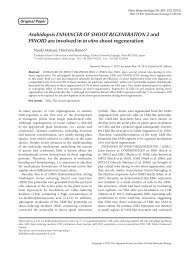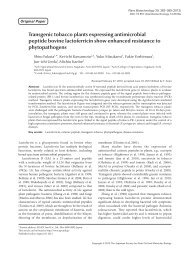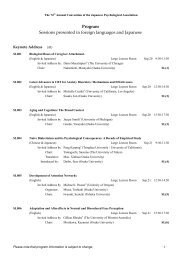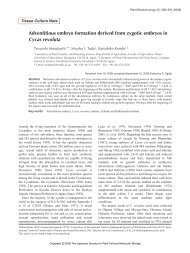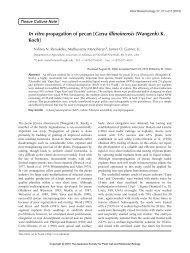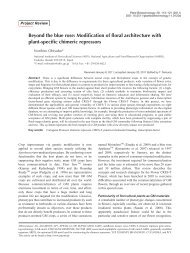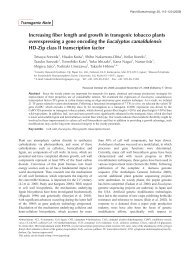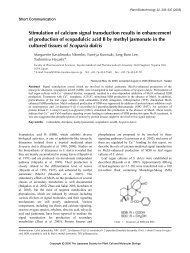Plant Biotechnol. 28(2): 131-140 (2011) - Wdc-jp.biz
Plant Biotechnol. 28(2): 131-140 (2011) - Wdc-jp.biz
Plant Biotechnol. 28(2): 131-140 (2011) - Wdc-jp.biz
Create successful ePaper yourself
Turn your PDF publications into a flip-book with our unique Google optimized e-Paper software.
T. Narumi et al. 137<br />
Figure 4. Morphological changes in TCP3-SRDX chrysanthemum. (A) Wild-type Chrysanthemum morifolium ‘Sei-Marin’ (left) and TCP3-SRDX<br />
chrysanthemum 1160-33 (right). (B) Comparison of leaf shape in transgenic chrysanthemum plants. Wild-type (left) and TCP3-SRDX<br />
chrysanthemum of type I (center) and type II phenotypes (right) are shown. Type I; 1160-27, Type II; 1160-33. Bars is1 cm. (C) Stereomicroscopic<br />
image of pistils in wild-type (left) and TCP3-SRDX chrysanthemum 1160-36 (right). Bars0.5 mm. (D) Phenotypic comparisons of chrysanthemum<br />
flowers and leaves. Typical mature flowers of wild-type plants (left), TCP3-SRDX 1160-33, TCP3-mSRDX 1185-9, and TCP3-ox 1187-15 (right) are<br />
shown. Bars1 cm. (E) Comparison of corolla size, petal shape, and disk floret maturity in transgenic chrysanthemum plants. Wild-type (left) and<br />
TCP3-SRDX chrysanthemum with type I (1160-17), type II (1160-36), and type III (1160-34) phenotypes are shown. Bars1 cm.



